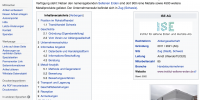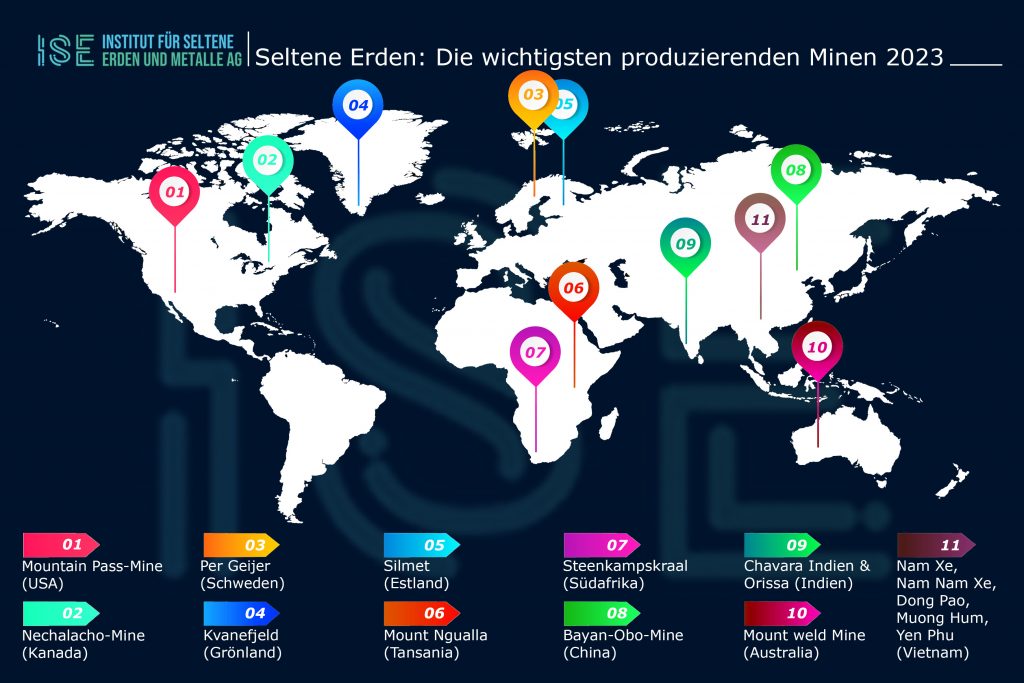Rare earths are sought after because they are needed for the manufacture of many high-tech products. However, their extraction from ores is complex and often polluting the environment. Under the coordination of the Helmholtz Institute Freiberg for Resource Technology, experts from research and industry are currently testing whether so-called calixarenes could be used as alternative extraction agents in industrial separation processes. The organic macromolecules, also known as container molecules because of their special chemical structure, are intended to simplify the enrichment of metals and significantly reduce the use of process chemicals.
Especially rare elements such as neodymium or yttrium are not. Only finely distributed. However, deposits are rare in which the mining of such rare earths is economically worthwhile. Their chemical and physical properties are so similar that they can be separated only with great technical effort. In addition, rare earth deposits often contain radioactive elements such as uranium or thorium, which must be efficiently removed before further processing.
To simplify common rare earth separation processes, research and industry experts have recently begun working on a number of alternative calixarenes-based extractants. "The advantage of such container molecules, which are named because of their cup-shaped structure, is that they can be tailored precisely to a chemical substance," explains project coordinator Prof. Christiane Scharf from the Helmholtz Institute Freiberg for Resource Technology at the Helmholtz Center Dresden Rossendorf (HZDR). "We now want to find out whether the molecules also prove themselves in practice." The aim of the research is to develop marketable extraction agents for the extractive industry. Apart from the HZDR, the project partners are the TU Bergakademie Freiberg, the University of Leipzig, BASF SE and the construction company CMI UVK GmbH.
The project team is testing the container molecules in liquid-liquid extraction, one of the most common methods currently used to separate and enrich rare earths from aqueous mixed solutions. The substances are thereby bound so far with the addition of an organic, also liquid extractant. Due to the low selectivity of conventional release agents, the individual elements accumulate over many stages of separation. With the help of calixarenes, the number of separation stages required for the extraction could be reduced tenfold for each element. In this way, not only the use of process chemicals and energy, but also the amount of chemical waste would be significantly reduced.
The project "SE-FLECX" has been funded by the German Ministry of Education and Research (BMBF) since May 2015 for a period of three years and over one million euros. "SE-FLECX" is part of the funding priority "r4 - Innovative Technologies for Resource Efficiency - Research for the Supply of Strategic Raw Materials" in the BMBF Framework Program "Research for Sustainable Development (FONA)".
Further information:
Prof. Christiane Scharf | Head of Metallurgy and Recycling
Helmholtz Institute Freiberg for Resource Technology at HZDR
Tel .: 0351 260 - 4429 | [email protected]
Media Contact:
Tina Schulz | Press and public relations
Helmholtz Institute Freiberg for Resource Technology at HZDR
Tel .: 0351 260 - 4427 | [email protected]
The Helmholtz Center Dresden-Rossendorf (HZDR) conducts research in the fields of energy, health and matter.
• How to use energy and resources efficiently, safely and sustainably?
• How can cancer be better visualized, characterized and effectively treated?
• How do matter and materials behave under the influence of high fields and in the smallest dimensions?
The HZDR has been a member of the Helmholtz Association, the largest scientific organization in Germany since 2011. It has four locations in Dresden, Leipzig, Freiberg and Grenoble and employs some 1.100 employees - including 500 scientists including 150 PhD students.
The Helmholtz Institute Freiberg for Resource Technology (HIF) aims to develop innovative technologies for the economy in order to provide and use mineral and metal-containing raw materials more efficiently and to recycle them in an environmentally friendly manner. 2011 was founded, belongs to the Helmholtz-Zentrum Dresden-Rossendorf and cooperates closely with the TU Bergakademie Freiberg.
Source and further information:
https://www.hzdr.de/presse/calixarene





